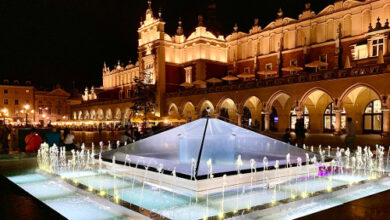Guide to Polish Currency
Polish Money Made Simple: How to Work with Zloty: Understanding Polish Banknotes and Coins
As you plan your trip to Poland or consider engaging with its economy, understanding the local currency is crucial. The Polish currency is the złoty, abbreviated as PLN and symbolised by zł.
Despite Poland’s inclusion in the European Union since 2004, the Euro hasn’t replaced the złoty, and there are no immediate plans for such a change. This means that all your transactions within Poland require you to use this national currency.
The złoty subdivides into 100 smaller units known as groszy, and this division is similar to how pounds are divided into pence. You will encounter various denominations of coins and banknotes during your stay.
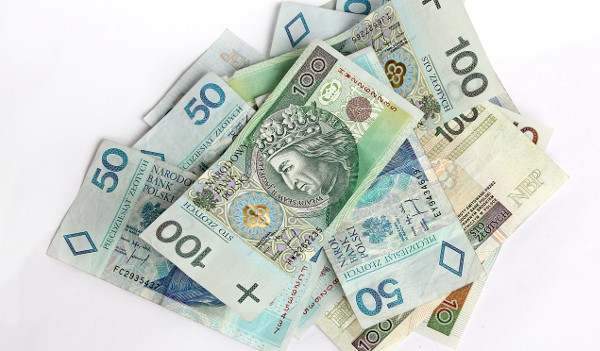
The coin denominations include 1, 2, 5, 10, 20, 50 groszy, and 1, 2, and 5 zł, while the banknotes come in denominations of 10, 20, 50, 100, 200, and 500 zł. Familiarising yourself with these will help streamline your financial dealings, from purchasing local goods to paying for services.
Your experience with Polish currency can be seamless with a little preparation. It’s essential to remember that Poland does not operate on a dual-currency system, so exchanging your foreign currency for złoty is a necessary step upon arrival, or even before, through a currency exchange service.
With złoty in hand, you’ll be ready to fully immerse yourself in the marketplace, attractions, and culture of Poland.
Table of Contents:
History of the Polish Currency
Your understanding of the Polish currency’s past is pivotal to grasping its present state. You’ll explore the origins and significant changes that have shaped the złoty’s journey through history.
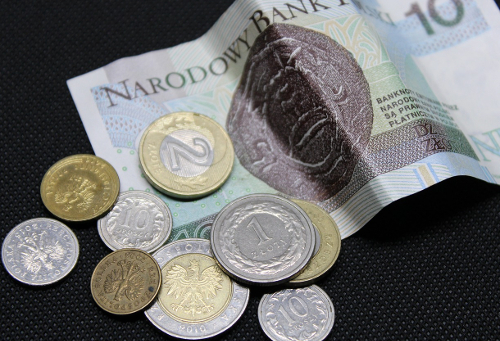
Origins and Historical Developments
The Polish złoty (PLN), which stands for ‘golden’, has a complex lineage, rooted deep in Poland’s monetary history. Initially, the Polish currency comprised coins like grosz and groszy, which can be traced back to the Polish-Lithuanian Commonwealth.
Subsequent partitions of Poland saw various currencies in use until the Polish Mark was introduced by occupiers in December 1918. This mark, after Poland regained independence, became the official currency and circulated across former Russian, German, and Austrian territories incorporated into Poland.
The turbulent economic landscape, marred by hyperinflation, necessitated robust monetary reforms. In January 1924, Poland’s parliament, the Sejm, passed a crucial reform enabling the Narodowy Bank Polski (NBP) to issue a new currency: the złoty, thus stabilising the economy.
Redenomination and Present Day
Poland experienced several currency redenominations, a reflection of ongoing efforts to maintain economic stability. The most recent redenomination took place in 1995, following a period of hyperinflation in the 1980s. During this redenomination, 10,000 old złoty (PLZ) were exchanged for 1 new złoty (PLN).
Presently, the Polish złoty subdivides into 100 groszy and comes in various denominations of coins and banknotes. While Poland is part of the European Union, it hasn’t adopted the euro. The decision to transition to the euro hinges on economic stability factors and requires meeting the Maastricht criteria, a set of fiscal rules mandated for major EU economies.
As of now, the złoty remains Poland’s steadfast currency, while discussions around euro adoption continue.

Understanding Currency Values
In exploring Polish currency values, it’s crucial to understand how the Polish Zloty stands in the global market and how exchange rates impact its valuation relative to other major currencies.
The Polish Zloty in the Global Market
The Polish Zloty, denoted as PLN and symbolised by zł, is a currency that holds its unique position in the global market. Unlike some of its European Union (EU) counterparts, Poland has not adopted the Euro (EUR) and the Zloty remains the sole legal tender.
When you examine its performance relative to currencies like the US Dollar (USD), the British Pound (GBP), and the Euro (EUR), the Zloty’s value can fluctuate due to economic factors, trade dynamics, and political stability within Poland and the broader international scene.
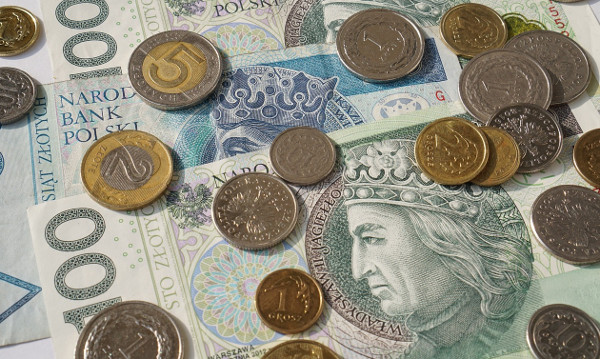
Exchange Rates Explained
Exchange rates define how much your Zloty can be converted into another currency and vice versa.
You’ll encounter various rates, such as the mid-market rate which is the midpoint between buy and sell prices of two currencies. This rate is the fairest and most transparent indicator of a currency’s value.
When using a currency converter, be aware that the rates offered by banks or exchange services may include a margin for profit, differing from the mid-market rate.
- USD/PLN: When converting to or from USD, your focus should be on the current exchange rate, which is readily available through banks or online converters.
- GBP/PLN: Similarly, for transactions involving British Pounds, the GBP to PLN exchange rate will determine how much Zloty you receive for every Pound exchanged.
- EUR/PLN: As Poland borders countries that use the Euro, the EUR to PLN rate is particularly relevant for both tourists and business transactions within the EU market.
Currency exchange rates can be locked in with some financial services at a fixed rate for a specific amount and date, ensuring predictable costs in transactions. Remember to consult multiple sources to ensure you are receiving a competitive rate.
Physical Currency
Your interactions with Polish currency will primarily involve the tangible forms of coins and banknotes. These are central to everyday transactions and their unique designs serve as both cultural representation and security measures.
Coins and Banknotes
Coins: Your pocket change in Poland constitutes coins known as ‘złoty’, abbreviated as ‘zł’ and symbolised by the letters PLN when discussing currency code.
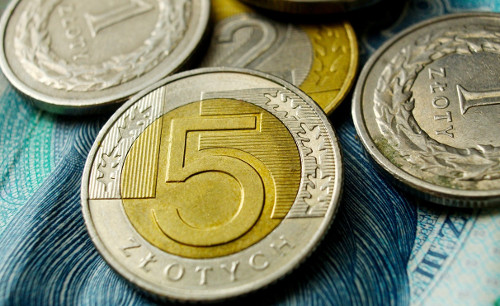
These coins come in denominations of 1, 2, 5, 10, 20, and 50 groszy, and 1, 2, and 5 złoty. The singular term for Polish currency is ‘złoty’, while ‘złote’ refers to multiple złoty coins, and ‘grosz’ refers to the smaller units of currency.
- 1 grosz
- 2 groszy
- 5 groszy
- 10 groszy
- 20 groszy
- 50 groszy
- 1 złoty
- 2 złote
- 5 złoty
Banknotes: They are issued in six key values that facilitate larger transactions. You’ll find banknotes in the following denominations:
- 10 złoty
- 20 złoty
- 50 złoty
- 100 złoty
- 200 złoty
- 500 złoty
Every banknote carries a distinct size and colour which simplifies identification and ensures better handling of cash.
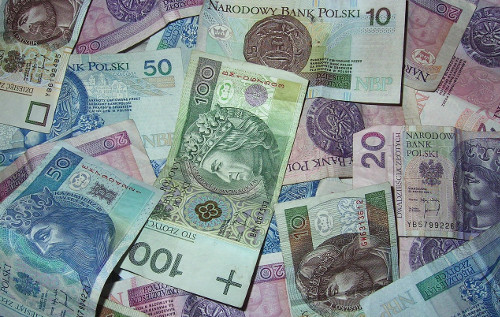
Design and Anti-Counterfeiting Features
The physical currency in Poland not only serves a monetary purpose but also showcases the country’s history and culture through its design.
Coins: They typically feature notable Polish figures, symbols, and national heritage sites. The common side of each coin provides its value and the national emblem, which is a crowned eagle.
Banknotes: Polish banknotes are adorned with portraits of historical figures and are imbued with intricate patterns and colours relevant to Polish tradition.
To combat counterfeiting, both Polish coins and banknotes incorporate advanced security features. Banknotes are equipped with watermarks, security threads, microtext, and other elements that are perceptible under ultraviolet light. These features are meticulously crafted to prevent forgery and to help you discern authentic currency.
Using Money in Poland
When travelling to Poland, you’ll be dealing with the Polish Złoty (PLN). It’s crucial to know where to exchange currency, access banking services, understand cashless payment systems, and grasp the tipping culture to manage your finances smoothly.
Currency Exchange Locations
In Poland, currency exchange offices are known as kantors and are widespread. You can find them in airports, railway stations, and city centres. For competitive rates, it’s often better to use a kantor rather than exchanging money at a hotel where the rates may be less favourable.
- Airports and Rail Stations: Conducive for immediate currency needs but higher rates.
- City Centres: Competitive rates, numerous options.
- Hotels: Convenient, but expect higher fees.
Banking and ATM Services
Polish banks offer full services with a network of ATM machines (bankomaty) available nationwide. ATMs accept a variety of cards including Visa, MasterCard, and American Express.
When using ATMs, be aware of potential ATM fees or foreign transaction fees from your home bank. Some ATMs offer dynamic currency conversion – always opt to be charged in PLN for a better exchange rate.
- Banks: Wide-ranging services, can assist with currency exchange.
- ATMs: Readily accessible, including in markets, attractions, and tourist areas.
Cashless Payment Options
Card payments are broadly accepted in Poland, with most establishments taking Visa, MasterCard, and less frequently, American Express. Debit and credit cards are a convenient alternative to carrying cash. However, check with your card issuer about foreign transaction fees for card payments abroad.
- Debit/Credit Card: Check for transaction fees before travel.
- Mobile Payments: Often available at modern retailers and service providers.
Understanding Prices and Tipping in Poland
Prices in Poland are typically displayed in złoty, and it’s essential not to assume prices are in euros. Tipping in restaurants and for services is customary, usually around 10% of the bill if you’re satisfied with the service.
- Prices: Clearly denoted in PLN, not euros.
- Tipping: 10% is standard for good service – cash is preferred.
By being aware of these financial particulars, your transactions in Poland should be hassle-free and secure. Make sure to have some cash for small purchases and tips, but remember that card payments are also a convenient and widely used method.
Read also:
Practical Tips for Travellers
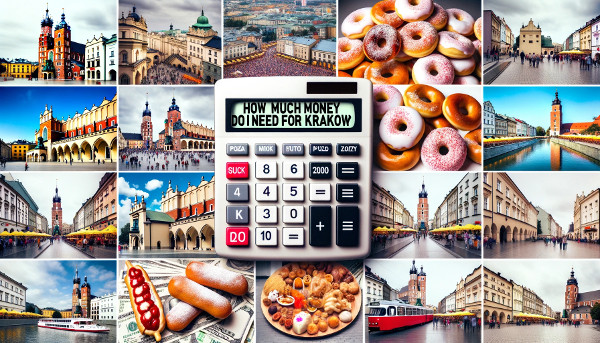
Navigating the Polish currency system is straightforward once you’re familiar with the essentials. Planning your travel money, avoiding pitfalls common amongst tourists, and keeping your finances secure are pivotal steps to ensure a smooth experience.
Exchanging Currency Ahead of Travel
Before heading to Poland, it’s prudent to exchange some of your local currency for Polish złoty (PLN). While you might be able to use euros in some places, mainly in Western Europe, Poland predominantly operates on its own currency.
Services such as Wise (formerly TransferWise) and Revolut offer competitive exchange rates and low fees, which can be more cost-effective than traditional banks. If you prefer to exchange currency upon arrival, consider banking institutions like Alior Bank, PKO BP, Bank Pekao, and mBank for reliable service.
Currency Exchange Table
| Your Currency | Approximate Exchange Rate* |
|---|---|
| British Pound (GBP) | 1 GBP = ~5.4 PLN |
| US Dollar (USD) | 1 USD = ~4.1 PLN |
| Euro (EUR) | 1 EUR = ~4.5 PLN |
Note: Exchange rates fluctuate regularly. Always confirm the current rate before making a transaction.
Avoiding Common Tourist Mistakes
You may come across businesses in tourist areas, especially in cities like Kraków, offering to accept currencies like euros or British pounds. However, paying in these currencies is typically not cost-effective due to poor exchange rates. Instead, use Polish money whenever possible.
For larger purchases or hotel accommodation, using a credit card is often the best choice, but check with your provider to ensure you’re aware of any foreign transaction fees.
Safety and Security Advice
Ensuring the safety of your money is crucial. Consider options for travel insurance to cover significant losses or theft.
Utilize money transfer services such as Wise, Revolut, or traditional banks like Bank Millennium, Alior Bank, or Citi Handlowy for secure transactions.
Be cautious with public ATMs and opt for machines within bank branches or supervised areas. Always keep a close eye on your belongings, particularly in crowded places, and use safes provided by your accommodation for valuables and excess cash.
Frequently Asked Questions
Navigating the currency in Poland is straightforward once you are acquainted with the basics of the Polish złoty and its use within the country.
What is the exchange rate from the Polish złoty to USD?
The exchange rate between the Polish złoty (PLN) and the US Dollar (USD) fluctuates regularly due to market dynamics. Check a reliable financial news source or use a currency converter for the current exchange rate.
Can one use the euro currency in Poland, or is the złoty the only accepted currency?
The złoty is the official currency of Poland. While some businesses, particularly in tourist areas, may accept euros, you are likely to encounter less favourable exchange rates. Utilising the złoty when making payments in Poland is generally preferable and more economical.
How is the word ‘złoty’ correctly pronounced in Polish?
‘Złoty’ is pronounced as zwot-ee, with the ‘ł’ sounding similar to the English ‘w’. The emphasis is on the first syllable.
Are there specific denominations for Polish coins, and what are they?
Polish coins come in several denominations: 1, 2, 5, 10, 20, and 50 groszy as well as 1, 2, and 5 złoty. They provide convenient means of making precise payments in cash.
When travelling to Poland, is it more cost-effective to exchange currency in the UK or upon arrival in Poland?
Currency exchange rates vary by location and service provider. It is often more cost-effective to exchange your currency in Poland, as local exchange offices and banks typically offer more competitive rates compared to those in the UK.
How does the złoty relate to groszy, and what is the conversion rate between them?
One złoty is equivalent to 100 groszy. Groszy serves as the smaller denomination of currency and is akin to cents in the context of dollars, allowing for transactions requiring lesser amounts than a full złoty.









